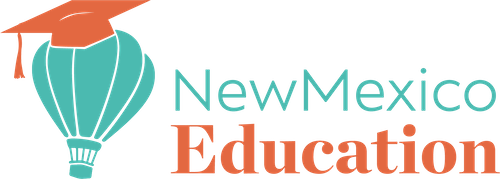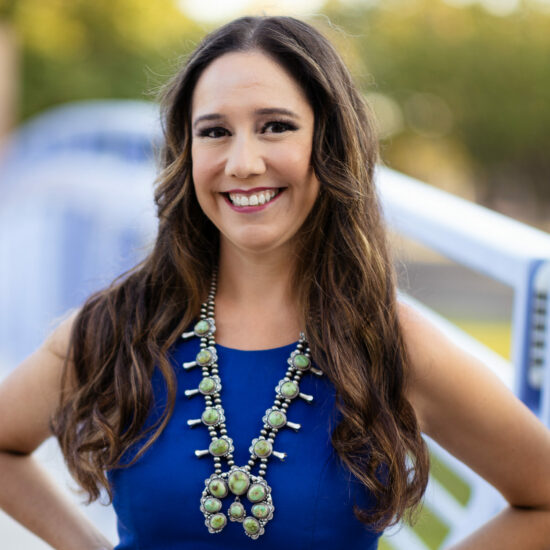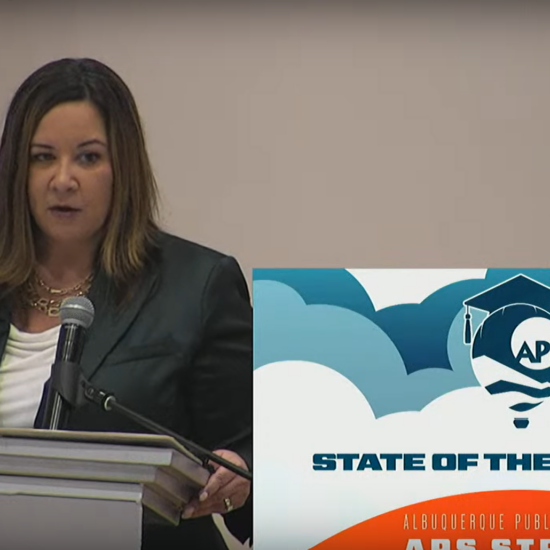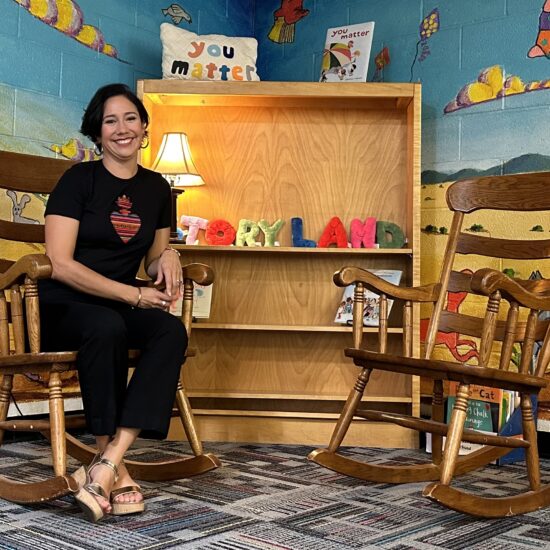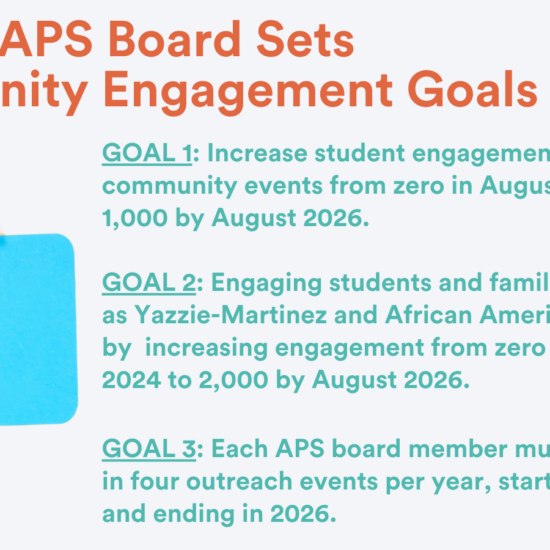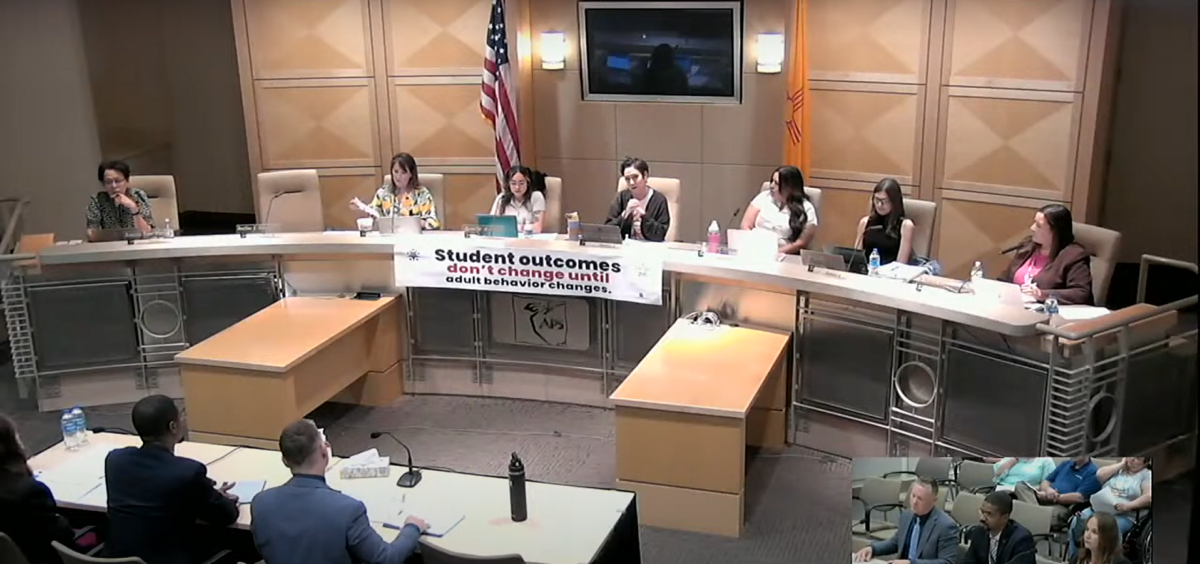
As part of their monthly review of work to improve student results, the Albuquerque Public Schools Board of Education heard how the district is using their budget to improve student results.
As part of their Student Outcomes Focused Governance, which is a result of the district’s Emerging Stronger plan, the APS board met on May 1 to review Guardrail 2. The guardrails were designed as rules the district must follow to keep them on track to improve student results.
Guardrail 2: Equitable Allocation of Resources
The superintendent will not allow resources to be allocated inequitably.
- Interim Guardrail 2.1: The long-term teacher sub-coverage rate at tiered priority schools will increase from 59 percent in July 2023 to 75 percent in July 2026.
- Interim Guardrail 2.2: The percentage of operational school-based resources will be allocated using a fair-student funding formula from 52 percent in July 2023 to 70 percent in July 2026.
- Interim Guardrail 2.3: The percentage of unspent restricted and operational funds will decrease from 30 percent in July 2023 to 27 percent in May 2026.
Each of the interim guardrails require the board of education to work with APS administration and staff so money is spent in a way that directly benefits students.
“Our focus on Guardrail 2 is to guarantee that every resource we allocate advances us toward a fair and balanced educational system,” APS Board President Danielle Gonzales said. “By committing to this equitable distribution of resources, we’re ensuring that all our students, irrespective of their backgrounds, receive the support they need to succeed.”
Interim Guardrail 2.1 – Substitute Retention
Guardrail 2.1 was put in place to improve consistency in the classroom where the teacher must take an extended period of leave. According to incoming Superintendent Gabriella Dúran Blakey, this guardrail makes sure that even in the absence of permanent instructors, students in the most vulnerable schools continue to receive consistent, quality education through qualified substitutes.
· Interim Guardrail 2.1: The long-term teacher sub-coverage rate at tiered priority schools will increase from 59 percent in July 2023 to 75 percent in July 2026.
Dr. Richard Bowman, Chief Information and Strategy Officer, outlined the district’s work to achieve the goal. “We have ramped up our efforts through a combination of enhanced training programs tailored specifically for long-term substitutes, competitive financial incentives to attract more qualified candidates, and a robust support system that includes continuous professional development and mentoring.”
Bowman said these measures are intended to create a more stable and effective teaching environment, even in the absence of permanent staff:
- Mentorship Support: Deploy mentorship support to each tiered priority school to assist substitutes and act as liaisons to administration.
- Sign-on Bonuses: Provide sign-on bonuses through Kelly Education to long-term substitutes at each school to encourage retention.
- Customized Orientations: Offer dedicated and customized site-specific orientations to prepare substitutes for their roles, tailored to the specific needs and challenges of each school.
- Substitute Success Checklists: Provide each substitute with a “checklist for success” and a customized substitute guide to ensure consistency and clarity in the substitute experience.
- Community Recruitment: Collaborate with each school to recruit substitutes from attendees at various school events, improving community connections and awareness.
- Site-Specific Marketing: Increase marketing efforts at each school site, informing visitors of substitute teaching opportunities and encouraging local community members to apply.
- Social Media Spotlights: Create targeted social media campaigns that spotlight individual schools to attract potential substitutes from online platforms where they are most active.
Board members were particularly focused on the metrics for measuring the success of these initiatives. Dr. Bowman said, “Our goal isn’t just to fill positions but to ensure that these substitutes can seamlessly integrate into our school communities and uphold the high educational standards APS strives for.”
APS is currently on track to meet this guardrail.
Interim Guardrail 2.2 – Equitable Use of Resources
Interim Guardrail 2.2 aims to reform how resources are allocated across the district by implementing a fair-student funding formula. The intention behind this guardrail is to ensure that funding is more equitably distributed based on student needs, rather than uniform per-pupil allocation, which often does not account for the varied challenges and requirements of different student populations.
- Interim Guardrail 2.2: The percentage of operational school-based resources will be allocated using a fair-student funding formula from 52 percent in July 2023 to 70 percent in July 2026.
“By advancing towards a fair-student funding formula, we are not just altering numbers; we are affirming our commitment to each student’s success. Our aim is to tailor our resources to serve the unique educational needs of every learner, thereby fostering a more inclusive and effective school environment,” Blakey said.
APS’s current review of its funding model reveals that approximately half of the school-based resources are allocated based on fixed formulas, with the other half managed by central departments under various constraints including statutory obligations and traditional practices. Only about 8 percent of these formula-driven resources are currently distributed based on student need characteristics, such as those provided through Title I and At-Risk funding.
APS is currently not on track to meet this guardrail.
To better focus their resources on student success, APS is working on:
Flexibility in Student/Teacher Ratios:
- APS is empowering school teams to adjust student-to-teacher ratios, allowing more personalized instruction.
- This flexibility enables schools to implement targeted interventions and allocate time for teacher collaboration, improving instructional quality and student support.
Special Education Delivery Models:
- The district is re-examining identification processes to ensure that special education services are more inclusive and integrated within general education settings.
- By refining these processes, APS aims to support a greater number of students in inclusion-based environments, fostering a seamless educational experience for all students.
School Portfolio Redesign and Reconfiguration:
- APS is assessing and potentially redesigning its portfolio of schools, with a particular focus on optimizing smaller and unique school models.
- This strategy involves enhancing the educational experience in smaller schools and creating additional flexibility for investments that are driven by the specific needs of students.
Interim Guardrail 2.3 – Student Focused Spending
Interim Guardrail 2.3 aims to reduce the percentage of unspent restricted and operational funds within Albuquerque Public Schools from 30 percent in July 2023 to 27 percent by July 2026. According to Blakey, this guardrail is critical for ensuring that funds are used efficiently and effectively, directly contributing to the educational needs of the students rather than remaining idle.
- Interim Guardrail 2.3: The percentage of unspent restricted and operational funds will decrease from 30 percent in July 2023 to 27 percent in May 2026.
As of March 31, 2024, APS reported that 61 percent of grant funds remained unspent—an improvement from the previous year’s 62 percent. However, operational funds saw a slight increase in unspent amounts, rising from 48 percent to 50 percent. Overall, the district’s unspent funds stood at 56 percent, indicating a need for more effective spending strategies to reach the annual goal of 27 percent by the end of the fiscal year.
APS Chief Financial Officer Rennette Apodaca listed some of the challenges APS is facing to meet this guardrail.
- High Turnover: Frequent changes in principals and secretaries have led to leaders lacking knowledge regarding budget management and spending procedures.
- Complex Funding Rules: The complexity of rules governing different types of funds makes it difficult for APS staff to master appropriate spending practices.
- Training Limitations: There are limited opportunities for training school staff on effective fund management, including how to combine various funding streams for specific purchases.
- System Inefficiencies: The current Enterprise Resource Planning (ERP) system complicates the creation and distribution of useful financial reports, hindering efficient fund management.
While Apodaca said these were issues that hold back the department, APS is working to alleviate the problems with:
- Improved Communication and Training: The finance department will better communicate timelines and monitor school spending more closely.
- System Upgrades: Plans are in place to implement new, user-friendly systems that include training tools to improve APS’s financial management.
- Expanded Support Programs: Collaboration with new principals will include new training opportunities, focusing on effective purchasing practices and deadline awareness.
“Our comprehensive approach to improving how we manage and expend our funds is critical,” Blakey said. “By setting clear expectations, enhancing our systems, and providing targeted training, we are ensuring that our resources directly contribute to the educational success of every student in APS.”
